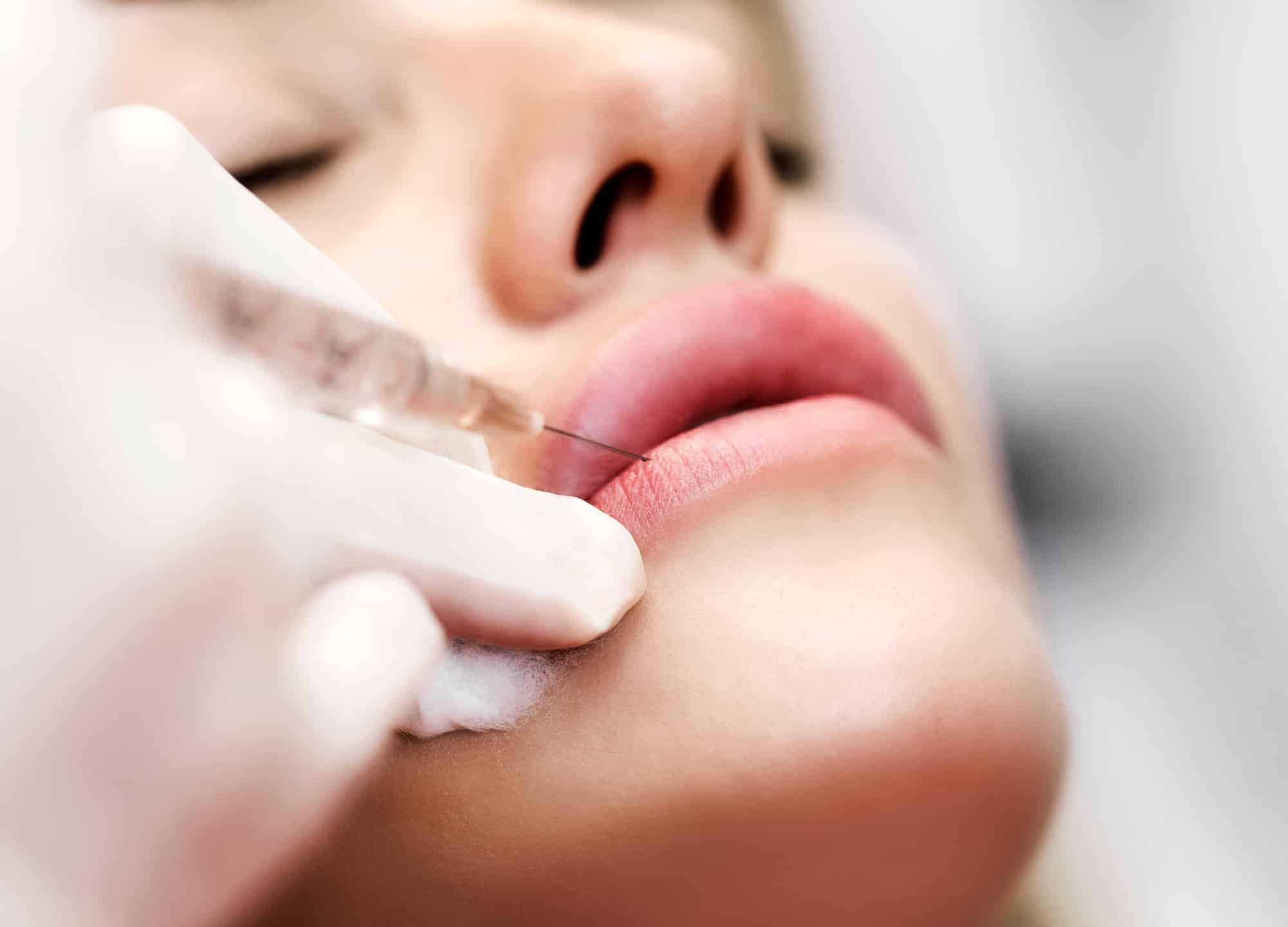If the thought of a needle approaching your face causes you to break out in a cold sweat, well, that’s not surprising—some estimates say a fear of needles impacts more than 20% of people in the U.S. But as the injectables market continues to grow, so too does the number of people finding ways to push their anxiety aside in the pursuit of smooth, plump, youthful skin. What works? According to doctors who have developed more comforting injection strategies and patients who have overcome their phobia, there is hope. (It’s also worth noting that the needles used for cosmetic injections are significantly smaller—30 and 32 gauge is standard, according to doctors in a RealSelf Q&A—than the 22–25 gauge needles used for intramuscular vaccine injections.)
Here, nine methods that medical professionals and patients say can ease the needle-related stress standing between you and the benefits of neurotoxins, fillers, and more.
Ask what to expect
It may seem too simple to ask your practitioner what exactly is to come, but from her perspective, Dr. Jessica Krant, a board-certified dermatologist based in New York City, says that act can have a big impact on how the visit goes. “I think letting a patient know what steps you’re doing helps to alleviate the fear of the unknown or feeling like they’re going to be surprised by a sudden painful action. [There’s] less mystery.”
Related: 7 New Fillers and Neurotoxins Expected to Launch Soon
Squeeze through it
“Many— if not most— patients who present for injectables aren’t exactly thrilled with someone coming at their face with needles,” says Dr. Charles Galanis, a board-certified plastic surgeon in Beverly Hills, California. One of the more colorful methods he uses: “I like to give them silicone breast implants as ‘stress balls,’ which they all find entertaining, not to mention an effective distraction.” He jokes, “Modern-day breast implants are extremely durable—I tell them, if they can break [the implant], their treatment is half off.” If your doctor doesn’t have the sense of humor for this trick, a regular stress ball, tucked in your bag, will work.
Dull the pain
If the thought of discomfort is holding you back, Dr. Heidi Waldorf, a board-certified dermatologist in Nanuet, New York, has another suggestion your doctor may be able to try: “A potent topical anesthetic, applied under [plastic wrap] for 10 to 15 minutes before the procedure, reduces the feel of the pricks.” She continues, “For very anxious patients, we recommend they apply [local prescription anesthetic] EMLA cream at home first. When they arrive, we wipe off their anesthetic and apply our more concentrated one.”
Try a vibrating tool
Research has proven that vibrating gadgets, like Buzzy ($43, walmart.com) can help to alleviate needle pain by distracting from it, which Dr. Galanis explains comes down to the “the gate control theory”—which “describes how nonpainful sensations can reduce, if not completely override, painful sensations.” Liz, a 28-year-old injectables user, can testify it to its effects: “It helps relax your facial muscles and also makes you think less about the needle entering your skin,” she says.
Take a deep breath
RealSelf community member Jillian, 29, says that deeply inhaling and exhaling throughout the procedure is one strategy that has made her injections “so much easier.” While she started out using vibrating tools and other distractions, she says, “Now I solely rely on deep breathing.”
Look to massage
“My nurses tap or massage the patient’s shoulder as I am injecting,” says Dr. Waldorf. Using the same sensory tactic as vibrating tools, she calls it “an effective distraction.” She continues, “If [that] isn’t enough, we put a stronger, weighted massage unit around the patient’s shoulders, [which is] comforting and reduces anxiety.”
Find the right doc
Since suffering through lip filler pain, injectables user Gertie, 55, has found the most effective method for relieving needle anxiety comes down to “the skill of the injector.” She says, “I found a doctor with a gentle touch. She uses tiny needles that are used on babies, so they are smaller. This results in much less pain and practically no bruising.”
Consider gas
“If all else isn’t enough, we use Pro-Nox, a mix of nitrous oxide and oxygen that the patient inhales as needed,” explains Dr. Waldorf. Patients remain awake but, she says, are much calmer. As for what to expect if you and your doctor decide to go this route, she says, “The concentration of nitrous is much lower than that used at the dentist. After the procedure is over, we set the patients up for a 15- to 30-minute nap [before] they can drive home safely.”
Don’t look
“This trick sounds silly, but honestly, as long as I’m not watching the needle come to my face—building up panic—I handle it, mentally, a lot better,” says RealSelf community member Jennifer, 31. By just looking away, she says, “I’m actually quite surprised how much needles do not hurt!”











